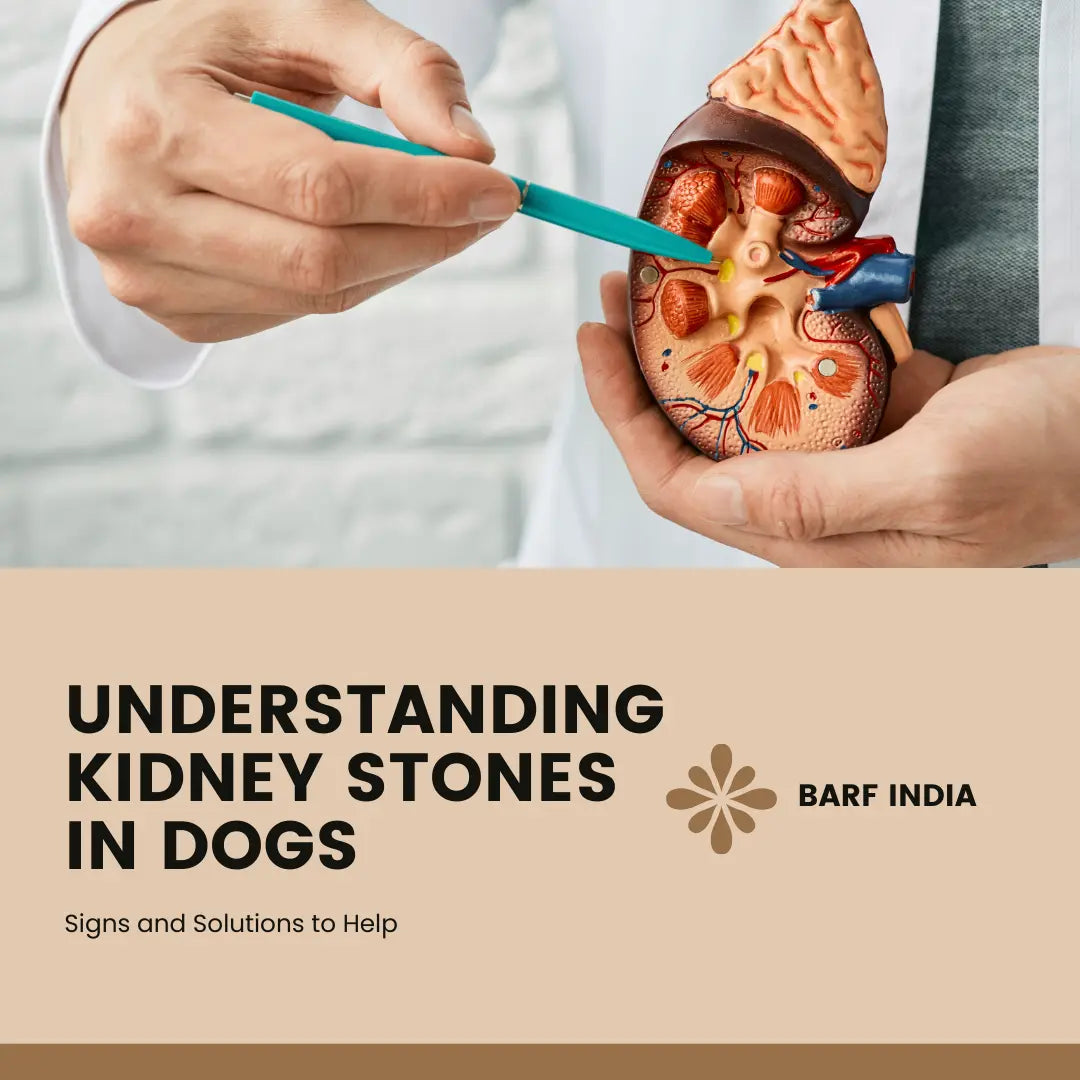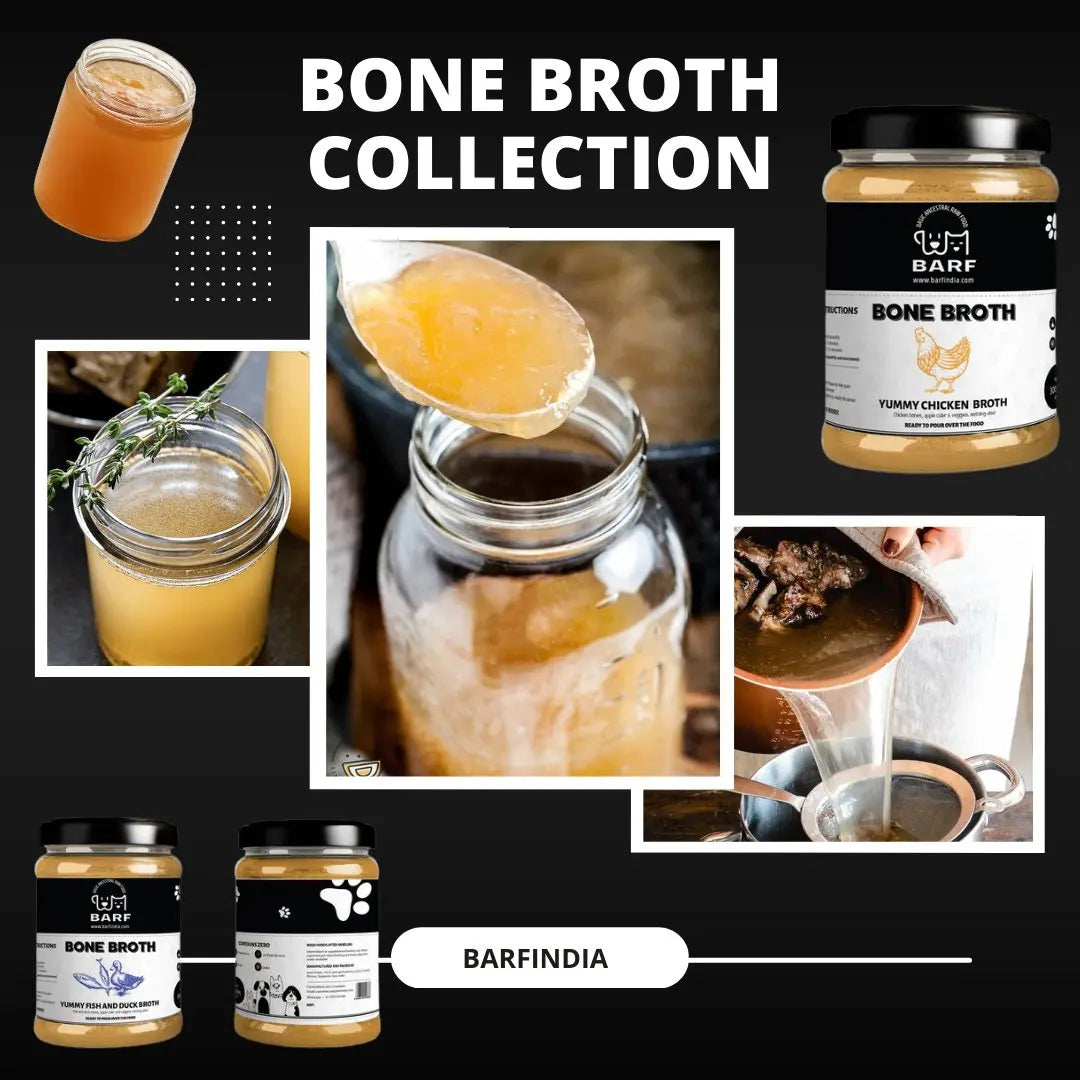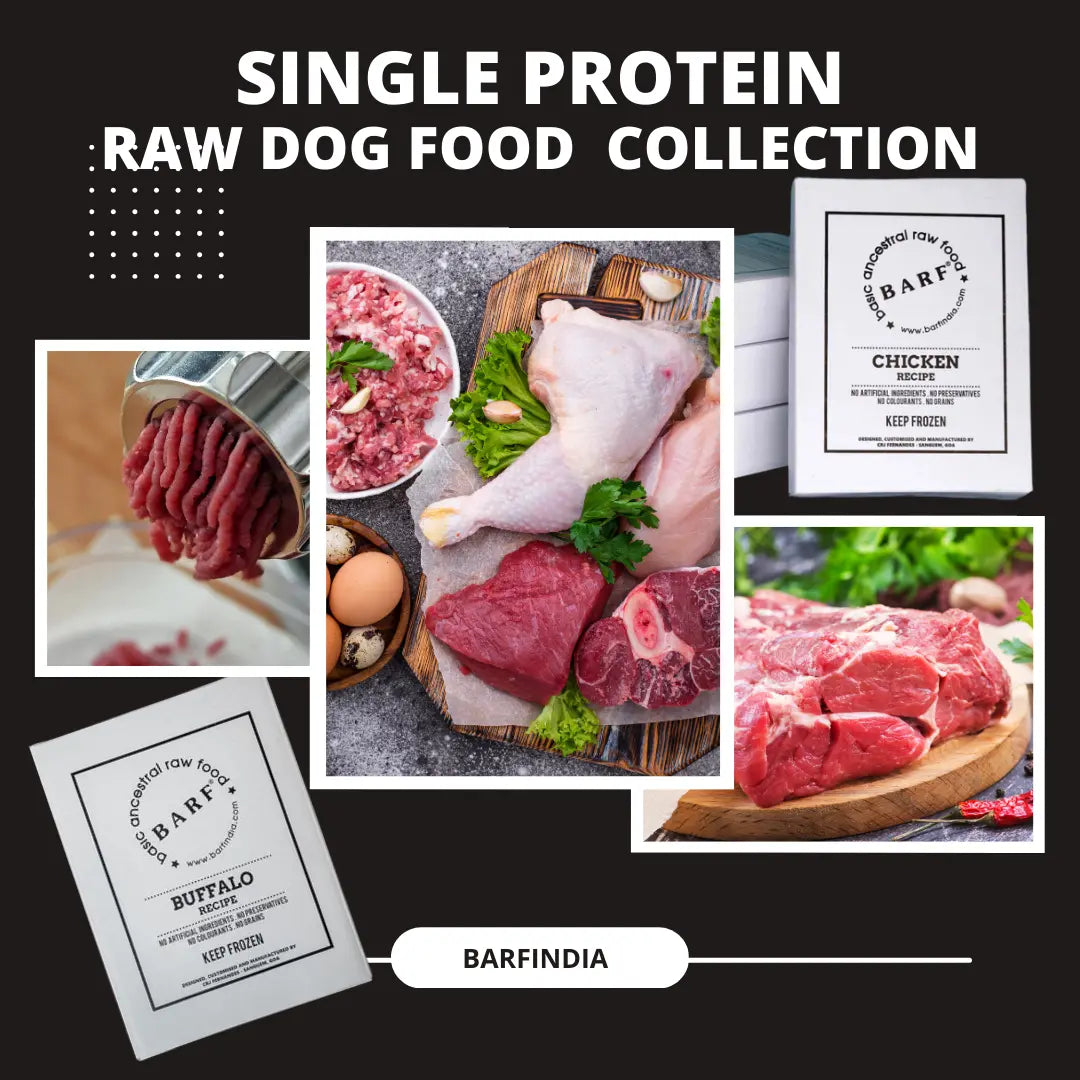
Understanding Kidney Stones in dogs
B.A.R.F. India AdministratorUnderstanding kidney stones in dogs
Kidney stones in dogs is a condition in which small clusters of crystals or stones form in the kidneys or urinary tract of your dog. Sometime these stones or their fragments pass through and get into the ureter, leading to a bunch of serious and painful complications for your dog.
Let’s read on to know how to understand and manage the condition in your dog.
Recognizing the symptoms of kidney stones in dogs
One would think that kidney stones would have perceptible symptoms, but that is not always the case. Several dogs with kidney stones show no signs and the illness is detected only when the dog is examined for some other medical problem. However, some symptoms that should be cause for concern include:
- Fever
- Kidney pain
- Blood in the urine
- Urinating frequently and in odd places
- Licking at genitals
- Pain or straining during urination
- Producing only small amounts of urine
- Recurrent urinary tract infections
- Abdominal discomfort or pain
- Lethargy, loss of energy
- Poor appetite
- Vomiting
- Weight loss
How do dogs get kidney stones?
Normal dog urine is a bit acidic and it contains dissolved mineral products in some proportion. If the urine stays dilute, it stays at the right pH, and mineral salts remain dissolved. However, if the urine pH changes and turns too acidic or alkaline, or becomes too concentrated, crystals of salt form and turn into stones. Kidney stones can form because of:
- An increased salt concentration in the urine, which is a result of diet or urinary tract infection
- An increased in water re-absorption by kidneys
- Any imbalance in urine pH, usually a result of diet or urinary tract infection
- Urinary tract infection
- Continuous use of diuretics
- Dehydration
- A genetic tendency –some breeds are more likely than others to get kidney stones. These include the Bichon Fries, Lhasa Apso, miniature Schnauzer, and Yorkshire terrier.
Another interesting observation is that females suffering from kidney stones outnumber males. 
Kidney stone diagnosis and various treatment options
If you suspect your pet is suffering from the symptoms of kidney stones, you need to make a quick trip to the vet. If possible, carry along a sample of urine in a plastic container collected directly from the dog while urinating. The vet will give your dog a thorough physical examination and ask question regarding the history of the symptoms. An abdominal x-ray or ultrasound can also help detect the presence of a kidney stone. If the kidney stone is small enough to allow normal urine flow then the vet might decide to leave it untouched and untreated. However, if it increases in size or breaks, then it can become a painful or even life-threatening condition which requires immediate treatment.
Treating kidney stones
The method of kidney stone treatment depends on the type, size and location of the stones.
- Medications:The vet could prescribe oral medication or supplements which will help make the urine acidic and speed up stone dissolving. Some medicines might make your dog drink more water to help dilute the salt content in the urine. Occasionally antibiotics might be prescribed to prevent urinary tract infection. Some pain medications might also be given.
- Dietary Adjustment: If your dog is mainly on kibble, a diet low in magnesium, phosphorous and protein, like homemade or raw, will be recommended. A diet to increase thirst could also be prescribed. In the case of a small stone, just a change in diet can help dissolve the stone in 2-12 weeks.
- Urohydropropulsion: When the urinary tract obstruction is likely and when the stones are still relatively small, your vet might perform aurohydropropulsion. This involves flushing the stone out with a sterile saline solution by inserting a urinary catheter through the urethra. This is generally done under general anesthesia.
- Surgery: If the risk of obstruction is high and a change in diet has not helped, then surgery might be required.
- ESWL (Extracorporeal Shock Wave Lithotripsy):This treatment can remove stones without the need for an invasive surgery. It involves using high-energy sound waves to break the stones into smaller pieces which can then be flushed out.
Management and monitoring dogs with Kidney Stones
The only problem with kidney stones is that they can recur. You will need follow-up appointments involving urinalysis and/or abdominal x-rays after every 4-6 weeks to check that new stones are not forming. A kidney stone therapy diet may be needed for life depending on the type of stone and the dog’s chances of getting regular urinary tract infections and stones.Lifetime dietary changes are recommended for breeds that have a genetic susceptibility to kidney stones. Do note, not all diets are meant to be used long-term, as some of them are not nutritionally sufficient. You can feed your dogs a high-moisture raw food diet to preventing urinary stones. A raw diet will have to be chosen depending on the type of kidney stone your dog had. Check with an animal nutritionist for the best diet.
Have you given thought to BARF – Basic Ancestral Raw Food?
The best way to help your dog if it has been detected with kidney stones or has been recently treated for kidney stones is to feed it a balanced, species appropriate food. And the best option is raw. A part of the wolf family (yes, even your sweet Lab or lap-sized Apso), your dog needs and will thrive only on a raw diet.  For a healthy, happy and energetic dog, you need to consider its diet and its nutritional needs at all times. Raw food is a natural food and it contains the exact mix of all the nutrients and goodness that a dog would get if it were a wild creature. More importantly, it doesn’t have any of low quality protein that is not good for your dog. You can make your own raw food in the right proportion, or you can buy commercially prepared raw food for your diet. Whatever you do, eliminate or limit the amount of bad protein from your dog’s diet. And watch your furry companion fight the illness better.
For a healthy, happy and energetic dog, you need to consider its diet and its nutritional needs at all times. Raw food is a natural food and it contains the exact mix of all the nutrients and goodness that a dog would get if it were a wild creature. More importantly, it doesn’t have any of low quality protein that is not good for your dog. You can make your own raw food in the right proportion, or you can buy commercially prepared raw food for your diet. Whatever you do, eliminate or limit the amount of bad protein from your dog’s diet. And watch your furry companion fight the illness better.




